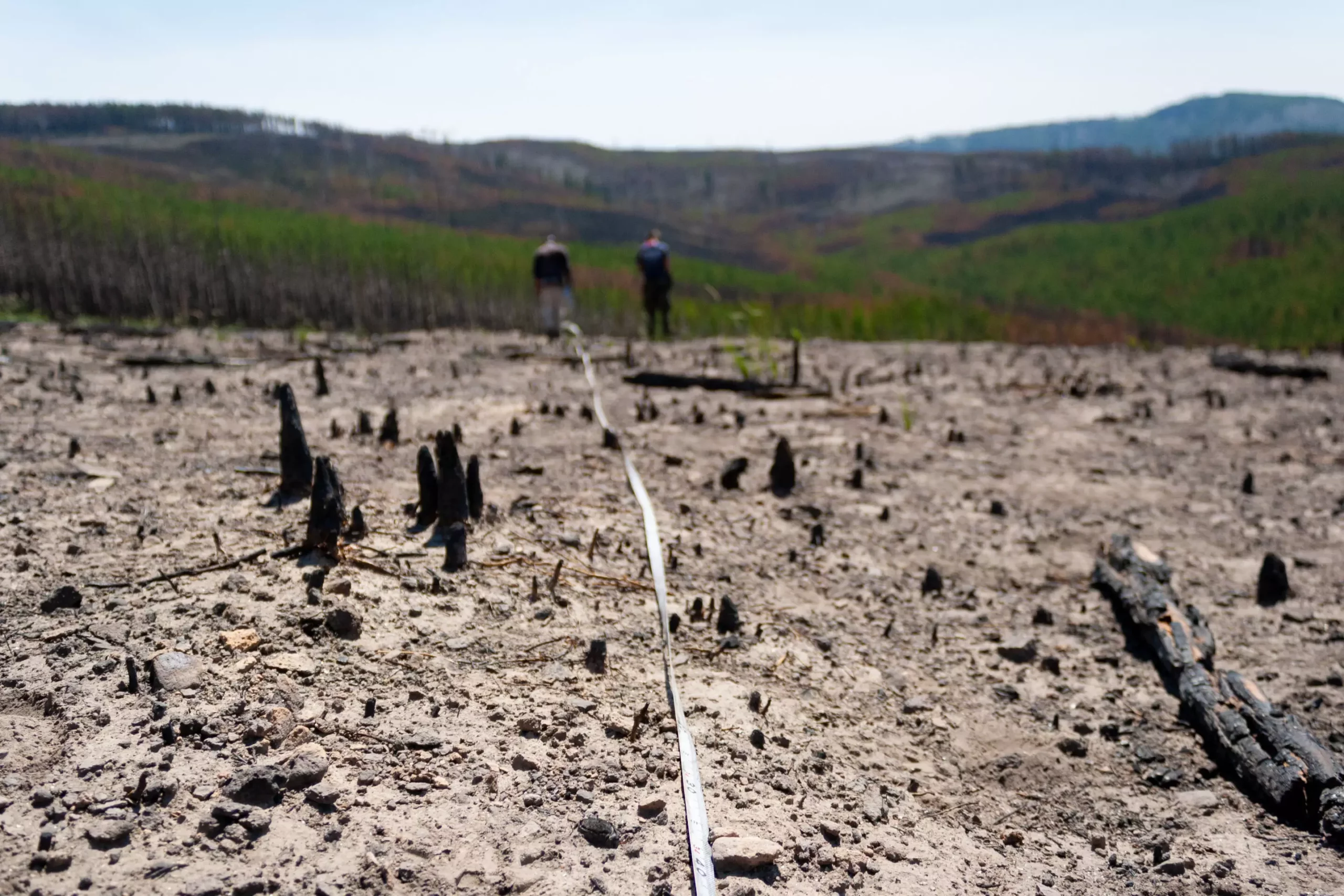Forests have long been hailed as a cornerstone of climate mitigation strategies, given their ability to sequester carbon dioxide and act as crucial carbon sinks. However, a groundbreaking study sheds light on a disconcerting truth: many forests in the Western United States are not living up to their reputation as effective climate solutions. Research led by Jazlynn Hall of the Cary Institute of Ecosystem Studies highlights the potential decline in carbon storage across the region due to climate change and increasing wildfire threats. This revelation challenges the prevailing narrative in climate discussions and raises urgent questions regarding the efficacy of using forests in our fight against climate change.
The study, published in Earth’s Future, meticulously analyzed carbon storage trends in Western forests from 2005 to 2019. Through a combination of field data from the U.S. Forest Service and advanced machine learning techniques, the researchers identified key trends and drivers that are compounding the vulnerabilities of these ecosystems. Hall’s assertion that “many climate mitigation pathways rely in part on additional forest carbon storage” brings into focus the precarious nature of our greenhouse gas reduction strategies. If the forests themselves are losing their capacity to sequester carbon, the implications for climate policy are dire.
Disturbing Trends in Carbon Storage
The results of Hall’s investigation are nothing short of alarming. According to the findings, carbon stored in living trees across much of the Western U.S. has been declining, while the amount of dead carbon—associated with dead trees and woody debris—has been on the rise. This dual phenomenon presents a paradox: while the accumulation of dead carbon may suggest a temporary increase in carbon presence, it starkly contrasts with living carbon’s essential role in long-term sequestration. Nearly all dead carbon will ultimately re-enter the atmosphere through decomposition or combustion, negating any potential benefits it may momentarily offer.
What’s more troubling is the implication that human management practices—specifically fire suppression—have created conditions ripe for catastrophic wildfires, furthering carbon loss. Such practices have effectively ramped up fuel loads in forests, leading to record-breaking blazes that we witnessed in recent years. This reflects a deep-seated flaw in our approach to forestry and fire management, where short-term interventions are leading to long-term liabilities. Compounded by droughts and changing climatic conditions, Western forests are teetering on the edge of a tipping point, further diminishing their role in achieving climate targets.
Identifying the Hopeful Outliers
However, not all is bleak in the Western forests. The Pacific Northwest emerges as a notable exception, where some ecoregions have experienced stable or even increased carbon storage during the study period. This glimmer of hope, described by Hall, is attributed to concerted conservation efforts that have aimed to limit harvesting in old-growth forests and expand protected lands. It’s a prime example of how human intervention can yield positive results when guided by ecological wisdom rather than shortsighted economic gain.
The implications of these findings are multifaceted. The Pacific Northwest showcases that sustainable forestry practices can lead to positive outcomes. Yet, these examples must not detract from the urgent need for widespread reform across all Western forests. The urgent message from this study is clear: without immediate and comprehensive investment in proactive forest management, carbon losses in vulnerable ecosystems will only escalate.
The Call for Adaptive Management Strategies
The insights gained from Hall’s research also underscore a need for new frameworks in forest management. The detailed regional analysis provides the groundwork for developing adaptive management strategies tailored to local environmental conditions. The study advocates for a data-driven approach that informs site-specific initiatives, including techniques like thinning and prescribed burning, which can bolster forest resilience against climate stressors.
Even though the carotid arteries—those vital veins of our environment—are clinging to their life-giving role as carbon sinks, we cannot afford complacency. The Western Fire and Forest Resilience Collaborative, led by senior author Winslow Hansen, is already making strides in addressing these issues. By employing the study’s findings, they aim to develop methodologies for monitoring carbon dynamics over the coming years, allowing for a dynamic response to changing forest conditions brought about by climate fluctuations.
What emerges from this study is not merely a cautionary tale but a call to action. The fight against climate change cannot rely solely on traditional ideas. Innovative, data-informed approaches to forest conservation and restoration could harness the latent potential of these natural systems, provided we act decisively and collaboratively.
In the face of such challenges, the fundamental realization must be embraced: effective climate solutions require adaptability, foresight, and a willingness to learn from the landscape. The path forward lies in recognizing the dual role our forests can play, as both critical climate allies and fragile ecosystems needing our stewardship and commitment.

